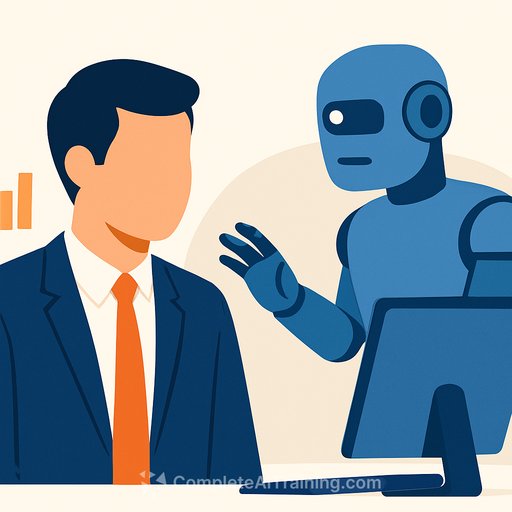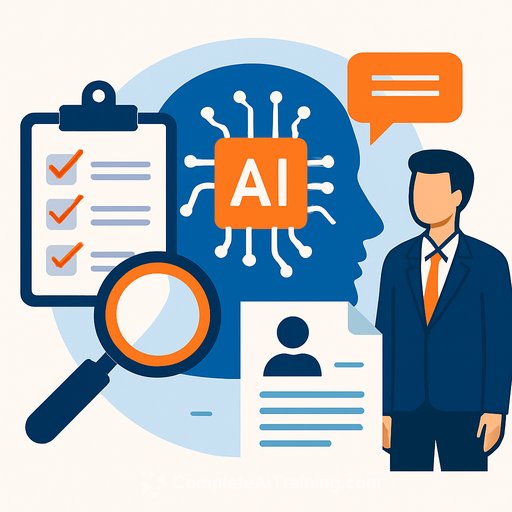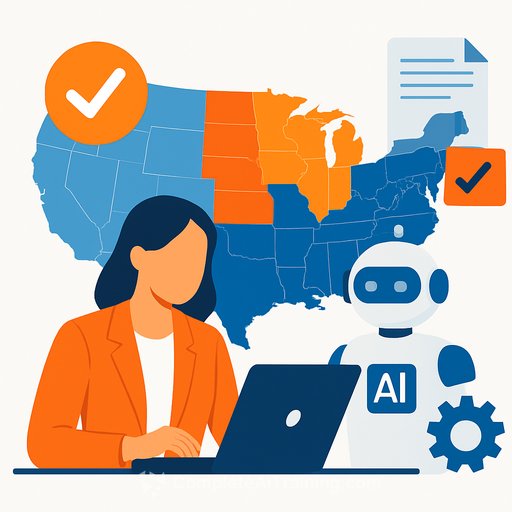The new white-collar risk: How AI is coming for America's office jobs
Automation used to hit the shop floor first. This time, it's the office. AI is eating the routine work that props up white-collar roles, and HR is on the hook to guide the transition with a plan, not platitudes.
A shift from muscle to mind
Analysts reviewing more than 160 million U.S. jobs say almost every role has tasks AI can handle as well or better. The most exposed aren't in warehouses - they're in cubes and Zoom rooms where language, numbers, and decisions move the business. That's both an efficiency story and a workforce risk.
When knowledge becomes vulnerable
The pattern is clear across studies from Evercore ISI, the ILO, the OECD, and OpenAI-UPenn: information-processing work sits in the blast radius. Clerical and administrative roles take the first hit. AI structures and summarizes with zero fatigue - data entry, transcription, scheduling, and routine drafting are its home turf.
That carries equity implications. The ILO warns administrative roles - held disproportionately by women - face the heaviest exposure. Their conclusion: job content will shift fast, and safeguards must be deliberate. See ILO summary.
The 10 U.S. office roles most at risk
- Data entry clerks and records technicians
- Administrative and executive assistants
- Payroll and accounting clerks
- Customer service representatives and call-center agents
- Paralegals and legal assistants
- Market research analysts
- Junior financial and investment analysts
- Technical writers and translators
- Basic-level software developers and QA testers
- Documentation and reporting specialists across corporate functions
A thinning middle
AI won't delete whole occupations overnight. It will strip 30-40% of tasks, shrink entry-level hiring, and flatten orgs. That means fewer apprenticeships, less mentoring, and brittle teams unless HR rewires job design and development paths.
The high-paid paradox
Six-figure roles are also exposed - just differently. Pros who adopt AI become force multipliers; those who don't get sidelined. The job doesn't vanish, but the value shifts to judgment, synthesis, client trust, and decision speed.
Automation meets human limits
Fully automated call centers still break on novel issues. AI can approximate logic; it can't build rapport or negotiate trade-offs under pressure. In engineering, copilots boost speed, but humans still arbitrate quality and design. The future isn't full replacement - it's reconfiguration.
Why this accelerates now
Productivity growth is sluggish while the workforce ages. Companies need output without headcount growth. AI is the tempting answer - unless it erodes capability, culture, and trust. HR's job is to capture the gains without hollowing out the system that creates them.
HR's new mandate: reduce risk, increase human advantage
Phase 1 - Diagnose (30 days)
- Task mapping: Break top 50 roles into tasks; tag each as automate, co-pilot, or human-led. Aim for task-level clarity, not job-level guesses.
- Exposure scoring: Weight tasks by time spent and business criticality. Flag roles with 30%+ automatable time and frontline impact.
- Equity check: Segment exposure by gender, tenure, location. Identify clusters at risk of disproportionate impact.
- Risk register: Capture legal, privacy, and quality risks by function. Tie each to controls and owners.
Phase 2 - Design (60 days)
- Job redesign: Recompose roles around judgment, client contact, exception handling, and cross-functional work. Build "co-pilot" standards per role.
- Career lattices: Replace single ladders with multiple paths. Example: admin assistant → project coordinator → CX escalation lead → operations analyst.
- Comp and titles: Reward impact (quality, cycle time, risk reduction), not keystrokes. Create AI fluency bands tied to pay ranges.
- Guardrails: Set approved tools, data boundaries, review steps, and audit trails. No PII in public models. Human sign-off on regulated outputs.
Phase 3 - Develop and Deploy (90 days)
- AI literacy for all (6 hours total): prompts, verification, privacy, bias, and task chaining. Practice on real workflows.
- Role academies (12-20 hours): paralegal summarization and cite checking; CS rep deflection + empathy scripts; payroll exception triage.
- Apprentice projects: 4-6 week sprints to rebuild one process with AI + SOPs. Measure time saved and error rates before/after.
- Internal talent marketplace: route at-risk employees into high-value projects; pay stipends for completed reskilling paths.
Practical playbook for exposed roles
- Data entry → Data quality analyst: shift from typing to validation, deduping, and exception logic. Tools: form parsers + human review.
- Admin assistant → Project coordinator: own workflows, meeting outcomes, and follow-through; co-pilot handles drafts and scheduling.
- Customer service rep → CX escalation specialist: bots resolve Tier 0-1; humans handle novel, emotional, high-stakes cases.
- Paralegal → Case strategist: AI drafts, human curates, checks citations, and crafts argument flow with attorney oversight.
- Junior analyst → Decision support partner: automate first-pass models; focus on assumptions, risk, and narrative for leaders.
Governance checklist
- Privacy: prohibit sensitive data in public tools; use enterprise models; log prompts/outputs.
- Quality: human in the loop for regulated content; red-team prompts; maintain model cards and SOPs.
- Bias and fairness: test on diverse cases; track adverse impact; include legal on review cadence.
- Security: vendor due diligence (SOC 2/ISO), role-based access, data retention limits.
Metrics that matter
- Capacity: hours reclaimed per role; percent of tasks with co-pilot support.
- Quality: error rates, rework, compliance findings.
- Speed: cycle time from request to decision; first-contact resolution in service.
- People: internal mobility rate, time to proficiency post-reskill, engagement in exposed cohorts.
- Equity: exposure and displacement rates by demographic; pay gap movement.
The human premium: skills to hire and grow
- Client trust, negotiation, and conflict resolution
- Problem framing, first principles thinking, and decision-making under uncertainty
- Cross-functional coordination and change leadership
- Creative concepting, persuasion, and narrative development
- Risk sensing, exception handling, and ethical judgment
Tooling to pilot (measured, not flashy)
- Document co-pilots: summarize, compare, extract fields; require source citations and human sign-off.
- Service deflection: scoped chat for FAQs with warm handoffs and sentiment flags.
- Workflow agents: draft emails, tickets, and reports from forms; humans approve before send.
- Code/query assistants: for analysts and HR ops to build reports and automations safely.
What to do this week
- Pick three exposed roles and map their top ten tasks. Tag each task A (automate), C (co-pilot), H (human).
- Run a two-hour pilot workshop per role to rebuild one process with AI + controls. Measure before/after.
- Stand up a simple AI usage policy and intake form. Keep a living registry of tools and use cases.
- Announce reskilling tracks and internal gigs for exposed teams. Show the path, not just the risk.
If you need structured learning
Role-based AI training speeds this up and reduces guesswork. See curated options by job function here: Complete AI Training - Courses by Job.
Bottom line
AI will clear the busywork and compress the middle of the org. Your edge is how quickly you reassign that time to judgment, relationships, and better decisions. Build the system now - or spend next year reacting to it.
Your membership also unlocks:






